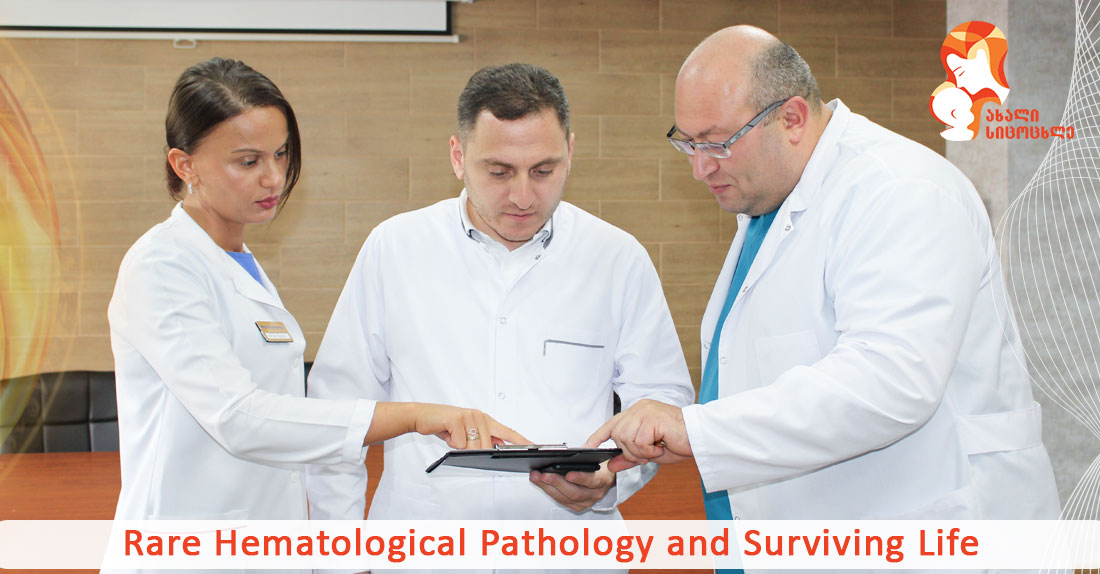
Rare pathology and another surviving life in the "New Life" Clinic
In the article, you will find a serious disease - A clinical example of successful treatment of the so-called Moschcowitz syndrome.
- Moschcowitz disease and multidisciplinary approach;
- Exclusive opportunities for the Hematology Service of the National Center of Surgery;
- Plasmapheresis as a method of treatment;
- Reduction of complications and improved patient condition.
Everyone knows how difficult it is to manage hematological (hematopoietic system)) diseases, especially oncohematology.There are also hematological pathologies of non-oncological nature, which are a great challenge in modern medicine, because, due to the specifics of their course, in many cases, treatment ends fatally.
The lethal outcome is because, for the most part, these diseases require a multidisciplinary approach and plenty of resources, both in terms of material and technical, as well as the qualified medical staff.
Anyone who has worked as a hematologist (so-called blood doctor) knows what thrombotic-thrombocytopenic purpura means- the same Moschcowitz disease that, according to world average statistics, depending on the year, units may become ill.
In the practice of a hematologist, thrombotic-thrombocytopenic purpura can be said to be one of the most severe and difficult diseases, due to the difficulty of its diagnosis, because it is characterized by the presence of nonspecific clinical symptoms (abrupt change in temperature, neurological disorders, kidney damage, thrombocytopenia, microangiopathic hemolytic anemia).
Not infrequently these symptoms do not give a complete picture, because in combination they may not all meet or respond to clinical features. Examinations show that clinically the disease usually develops with an acute onset, with sudden progression, even in the background of complete health, and is progressing extremely aggressively. In this case, specialists should resort to instant adequate therapy, in the absence of which, the mortality rate is dramatically high.
Moschcowitz Disease
It is a disease characterized by a sharp drop in the level of platelets in the blood, which usually causes the hemorrhagic syndrome, i.e. bleeding or bruising. Urgent resuscitation measures are needed to save the patient's life at this time.
According to statistics, in case of delayed treatment, the mortality rate can reach 95%. Even a timely start of treatment, unfortunately, does not give a favorable result, as 20-30% of cases end in death. The disease is more common in young patients, including pregnant women.
Powerful Hematology Department
The Department of Blood Diseases at the “National Center of Surgery” has been functioning for many years and is practically the equivalent of this clinic. And in recent years, also with the unique hardware support, the scale of hematology has increased so much that the Blood Diseases Service has branched out and become an integral part of the Center's branch, the “New Life” Clinic; Powerful hematology department within multidisciplinary clinics, with its numerous and professional staff, is practically exclusive with its capabilities, which is another proof of the case we have discussed.
The case of the “New Life” Clinic concerns a 29-year-old pregnant woman who was taken to one of the clinics in Tbilisi in a serious condition a few days before being placed with us.
According to hematologist Levan Makhaldiani, the events took place as follows:
Initially, the pregnant patient experienced pain and tightness in the hypogastrium (lower abdomen), so she was referred to a gynecologist for a scheduled visit. Clinical-laboratory studies revealed thrombocytopenia, anemia, and a diagnosis of idiopathic thrombocytopenic purpura. Since the pathology was threatening the mother's life, it, unfortunately, became necessary to terminate the pregnancy and determine a further treatment strategy. In this regard, the patient underwent several sessions of plasmapheresis, against which the general condition improved relatively much, and by the patient's own decision, she was discharged from the clinic.
Unfortunately, within days of being discharged, an episode of loss of consciousness occurred. The woman found it difficult to get in touch and amid a sharp deterioration in her health, she was rushed to our clinic by the emergency crew.
Based on laboratory studies, the patient was diagnosed with a recurrence of the disease, which is why she was placed in the critical care unit to continue treatment.
Plasmapheresis - one of the main methods of treatment
The basic method of treatment of thrombotic-thrombocytopenic purpura is plasmapheresis, which involves filtering the blood with a special device.
The patient was pumped up to 2 liters of donor plasma through the device during the day. Besides, treatment included high-dose hormone therapy and immunotherapy.
According to Akaki Khachidze, Head of the Critical Department of the “New Life” Clinic: due to the patient's serious condition, an objective assessment of cranial nerve function was not possible. However, against the background of general weakness, the strength in the limbs was reduced. The patient was therefore placed in the Department of Critical Care Medicine, prescribed, with a course of intensive care, including plasmapheresis.
Against the background of the current treatment, the patient became relatively neurologically active, speaking fluently, however, the general condition remained severe, leading to her underlying disease.
Critical anemia, thrombocytopenia remained insurmountable under the control of laboratory examination; Transfusion, symptomatic therapy was again performed for correction and monitoring vital parameters.
Despite the medical measures taken, the general condition of the patient still deteriorated, there was difficulty breathing, shortness of breath.
According to resuscitator Manuela Pipia: on the background of thrombocytopenia, the expected complications were revealed, acute respiratory failure deepened, auxiliary muscles were involved in the act of breathing, the patient was intubated and transferred to controlled breathing. Computed tomography of the pulmonary artery with angiography was performed to rule out pulmonary artery thromboembolism -bilateral acute pneumonia and respiratory distress syndrome have been confirmed.
Due to the complication associated with the underlying disease, the patient underwent artificial lung ventilation for 2 weeks. Thanks to the efforts of the clinic's resuscitators and the entire medical staff, the young woman's condition gradually improved.
Positive dynamics of the patient's condition
To get a positive result, the patient needed a total of 16 plasmapheresis sessions. At the same time, many vital parameters were monitored and corrected; Because of pulmonary distress syndrome, it was necessary to use constantly changing modes of artificial ventilation.
The satisfactory result was achieved after 1 month of treatment: the patient with clear consciousness, without any neurological deficits, and on the background of hematological stabilization was discharged home.
Another surviving life is an example of how important it is to have a timely and correct diagnosis, adequate treatment, and the availability of highly qualified staff.
The desired positive result was due to the multidisciplinary approach to the problem, which involves the participation of specialists of different profiles in the management of the disease.
Wish you health!








